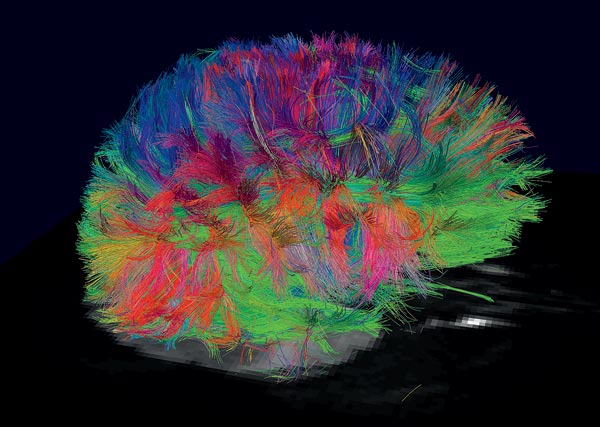
Neural fibers in the brain are too tiny to image directly, so scientists map them by measuring the diffusion of water molecules along their length. The scientists first break the MRI image into “voxels,” or three-dimensional pixels, and calculate the speed at which water is moving through each voxel in every direction. Those data are represented here as peanut-shaped blobs. From each shape, the researchers can infer the most likely path of the various nerve fibers (red and blue lines) passing through that spot.
To study specific circuits in the brain, scientists can isolate a subset of fibers. The circuit shown here represents the core of the human limbic system, which plays a central role in emotion and memory. The thick green bundle enclosed by the red circle is the cingulum bundle, which connects different parts of the cortex. The C-shaped blue fibers to the right, called the uncinate fasciculus, connect the temporal lobe, which regulates language and memory, with the frontal lobe, an area involved in higher executive function and planning. Damage to this circuit can result in the inability to form new memories and the loss of emotional control.
The complete brain of an owl monkey is shown here.
This story is only available to subscribers.
Don’t settle for half the story.
Get paywall-free access to technology news for the here and now.
